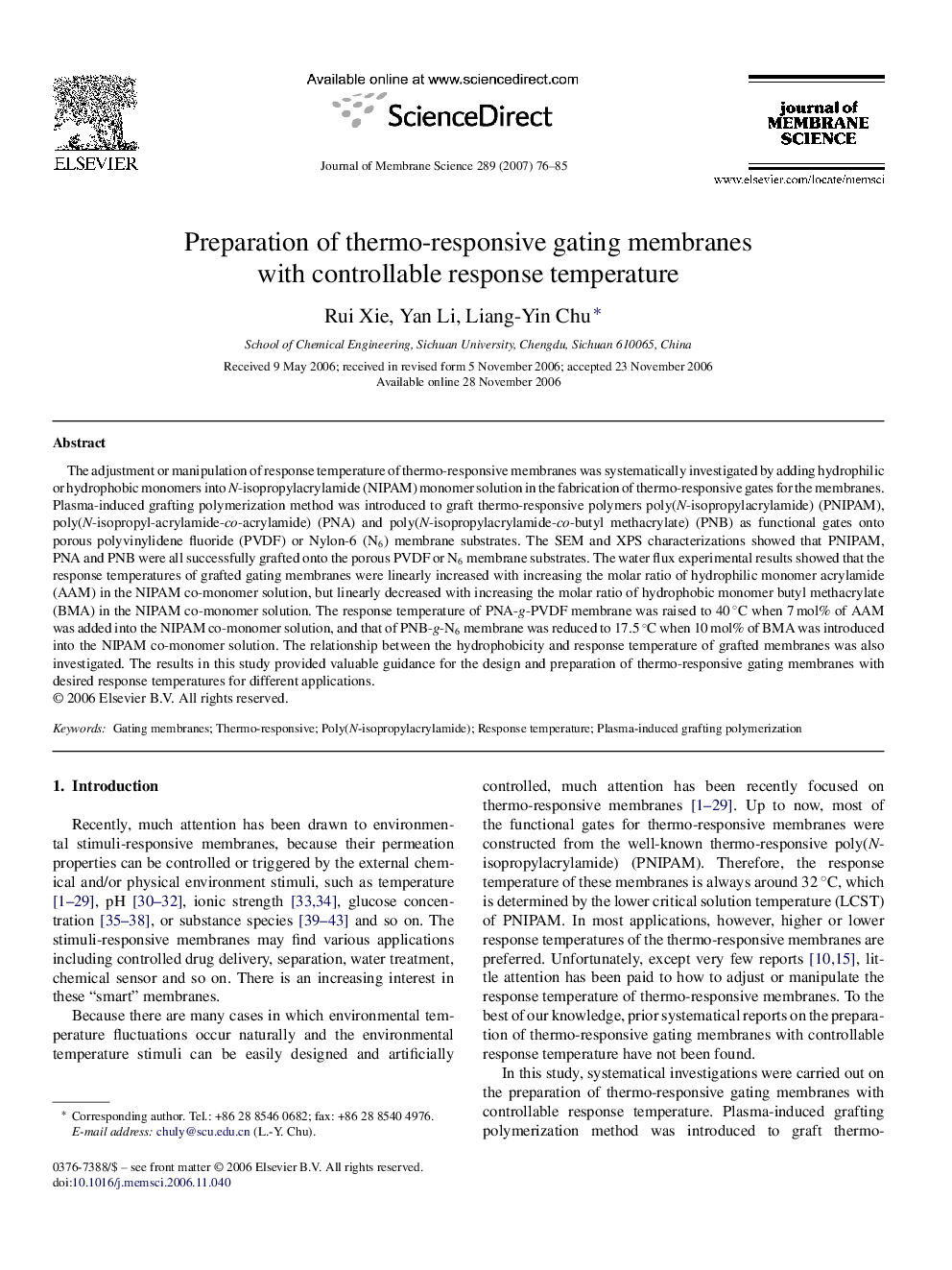| Article ID | Journal | Published Year | Pages | File Type |
|---|---|---|---|---|
| 638795 | Journal of Membrane Science | 2007 | 10 Pages |
Abstract
The adjustment or manipulation of response temperature of thermo-responsive membranes was systematically investigated by adding hydrophilic or hydrophobic monomers into N-isopropylacrylamide (NIPAM) monomer solution in the fabrication of thermo-responsive gates for the membranes. Plasma-induced grafting polymerization method was introduced to graft thermo-responsive polymers poly(N-isopropylacrylamide) (PNIPAM), poly(N-isopropyl-acrylamide-co-acrylamide) (PNA) and poly(N-isopropylacrylamide-co-butyl methacrylate) (PNB) as functional gates onto porous polyvinylidene fluoride (PVDF) or Nylon-6 (N6) membrane substrates. The SEM and XPS characterizations showed that PNIPAM, PNA and PNB were all successfully grafted onto the porous PVDF or N6 membrane substrates. The water flux experimental results showed that the response temperatures of grafted gating membranes were linearly increased with increasing the molar ratio of hydrophilic monomer acrylamide (AAM) in the NIPAM co-monomer solution, but linearly decreased with increasing the molar ratio of hydrophobic monomer butyl methacrylate (BMA) in the NIPAM co-monomer solution. The response temperature of PNA-g-PVDF membrane was raised to 40 °C when 7 mol% of AAM was added into the NIPAM co-monomer solution, and that of PNB-g-N6 membrane was reduced to 17.5 °C when 10 mol% of BMA was introduced into the NIPAM co-monomer solution. The relationship between the hydrophobicity and response temperature of grafted membranes was also investigated. The results in this study provided valuable guidance for the design and preparation of thermo-responsive gating membranes with desired response temperatures for different applications.
Related Topics
Physical Sciences and Engineering
Chemical Engineering
Filtration and Separation
Authors
Rui Xie, Yan Li, Liang-Yin Chu,
